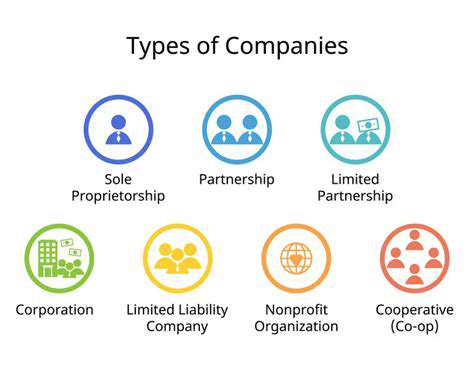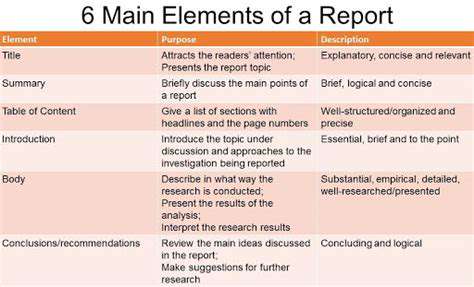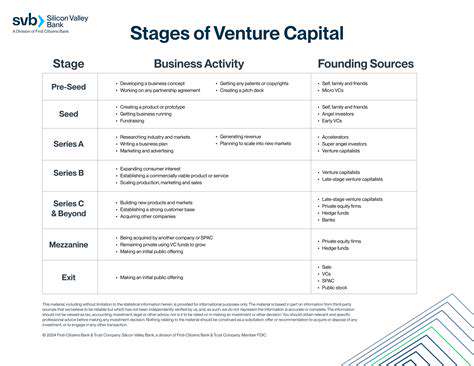Guide to Understanding Business Legal Structures

Sole Proprietorship: A Simple Business Structure
A sole proprietorship is the simplest business structure, often the first choice for entrepreneurs starting out. It's easy to establish, requiring minimal paperwork and legal fees. This straightforward setup allows for complete control over the business decisions by the owner. However, the owner is personally liable for all business debts and obligations, which means personal assets could be at risk if the business incurs significant debt or faces legal action.
This structure offers flexibility, allowing the owner to make quick decisions without the need for consultations with partners or shareholders. This agility can be crucial for responding quickly to market changes or opportunities. The owner also keeps all profits, without having to share them with others.
Key Advantages of Sole Proprietorships
One key advantage is the relative ease of setup and operation. Minimal paperwork and legal requirements make it a straightforward process. Owners have complete control over the business and its direction. The owner keeps all profits after deducting business expenses, which is a significant financial benefit.
Key Disadvantages of Sole Proprietorships
The biggest drawback is the unlimited personal liability. This means personal assets are at risk if the business faces debt or lawsuits. This significant financial risk can be a major deterrent for some entrepreneurs.
Another disadvantage is the limited access to capital. Funding the business growth can be challenging, relying solely on the owner's resources. This can limit expansion opportunities.
Partnership: Sharing the Responsibility
A partnership involves two or more individuals who agree to share in the profits or losses of a business. It's a flexible structure that can be tailored to the specific needs of the partners. This structure is suitable for businesses needing more capital and expertise than a sole proprietor can offer.
Types of Partnerships:
Partnerships can take various forms, such as general partnerships, where all partners share in the management and liability, and limited partnerships, where some partners have limited liability and involvement in the business's daily operations. Understanding the different types is crucial for selecting the right structure that aligns with the partners' individual roles and responsibilities. This understanding is essential to avoid future conflicts and ensure a smooth operation.
Advantages of Partnerships
Partnerships can combine the skills and resources of multiple individuals, leading to a wider range of expertise and capital. This synergy can be particularly valuable for complex ventures. Shared responsibilities often lead to more efficient operations. This can be very useful when dealing with more complex tasks.
Partnerships can attract more capital. Combining the resources and experience of several individuals can lead to more financial strength and enable more opportunities for growth. This is a significant advantage over a sole proprietorship.
Disadvantages of Partnerships
Disagreements among partners can hinder decision-making and operational efficiency. Careful consideration of partner selection, roles, and responsibilities is necessary to minimize these potential conflicts. Profit sharing can also be a source of contention, especially when individual contributions differ.
Limited Liability Companies (LLCs): Balancing Protection and Flexibility
Understanding the Core Principles of LLCs
Limited Liability Companies (LLCs) offer a unique blend of liability protection and operational flexibility, making them a popular choice for entrepreneurs and small business owners. A key principle is the limited liability aspect, meaning the personal assets of the owners (members) are shielded from business debts and liabilities. This crucial distinction separates the business's financial obligations from the owners' personal finances, providing a vital safeguard in case of lawsuits or business failures. This protection is often a significant advantage over other business structures, such as sole proprietorships or partnerships, where personal assets may be at risk.
Another crucial element is the flexibility afforded by LLCs. They can be structured to accommodate various operational needs, allowing for diverse management approaches and operational arrangements. This flexibility extends to the allocation of profits and losses among members, providing customized solutions tailored to the specific circumstances of the business. Members can agree on profit-sharing ratios that align with their individual contributions or investments, fostering a mutually beneficial and adaptable business environment.
Navigating the Legal and Operational Landscape
While LLCs offer significant advantages, navigating the legal and operational aspects requires careful consideration. Understanding the specific requirements of your state's LLC laws is paramount. These regulations dictate the formation process, ongoing compliance obligations, and the potential ramifications of non-compliance. Different states may have varying requirements regarding annual reports, member meetings, and record-keeping procedures.
Furthermore, establishing clear operating agreements is essential for defining the roles, responsibilities, and decision-making processes within the LLC. These agreements outline the distribution of profits and losses, member responsibilities, and procedures for dispute resolution, minimizing potential conflicts and ensuring smooth operation. A well-drafted operating agreement serves as a roadmap for the LLC's future, providing a framework for addressing potential challenges and fostering a harmonious working environment.
Thorough research and consultation with legal and financial professionals are crucial for navigating the complexities of LLC formation and operation. This proactive approach helps ensure compliance with legal requirements and minimizes the risk of potential issues in the future. Careful planning and understanding of the specific legal framework within your jurisdiction is essential for maximizing the benefits of LLC structure and ensuring long-term success.
Choosing the correct business structure is often a delicate balance between protecting personal assets and maintaining flexibility in operations. LLCs aim to strike this balance effectively, providing a robust framework for entrepreneurs. Understanding the intricacies and nuances is crucial for achieving the desired outcomes.
The ongoing management and compliance aspects of LLCs should be carefully considered. Regular review of operating agreements and compliance with state regulations are necessary for the long-term health and viability of the business.

Read more about Guide to Understanding Business Legal Structures
Hot Recommendations
- How to Stay Productive While Working Remotely
- Tips for Managing Conflict with Coworkers
- Entrance & Certification Exams (升学考试)
- How to Improve Your Storytelling Skills (Speaking)
- How to Find Profitable Side Hustles
- Tips for Preparing for the TOEFL iBT Home Edition
- Guide to Switching Careers from [Industry A] to [Industry B]
- How to Run an Effective Hybrid Meeting
- Tips for Marketing Your Side Hustle on Instagram











